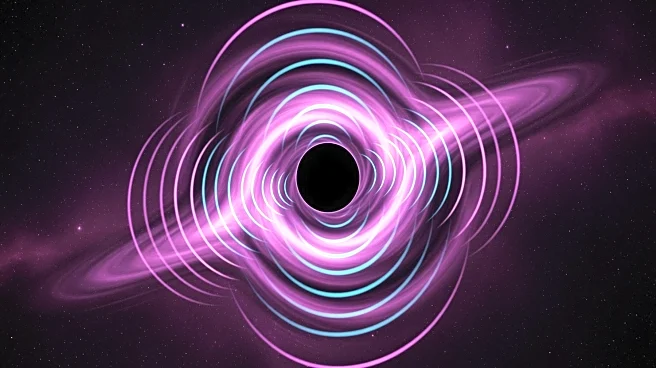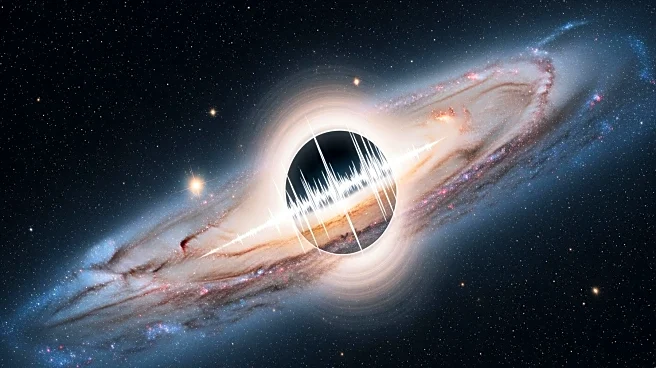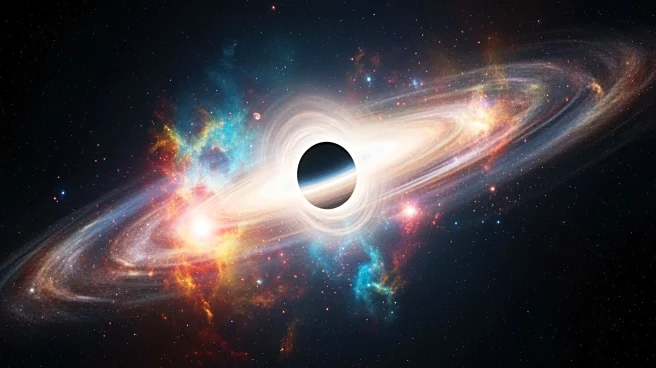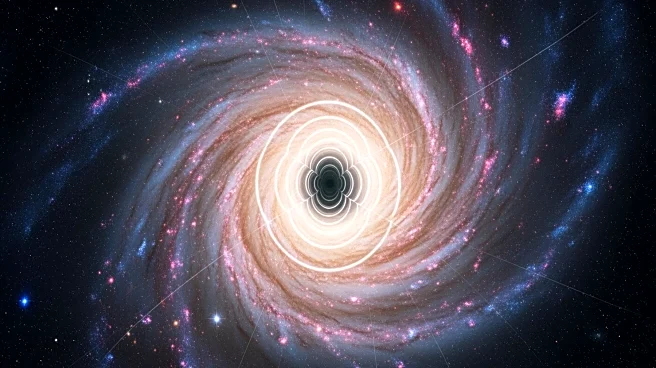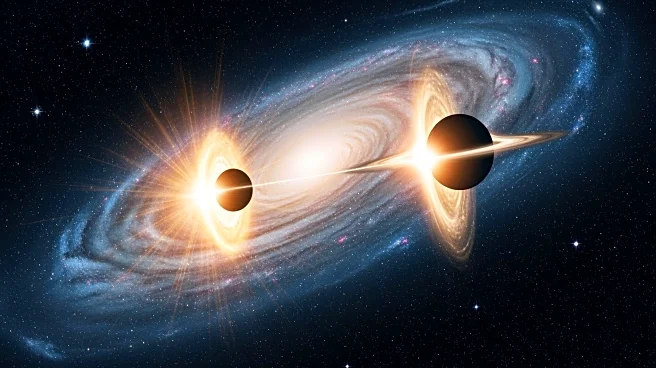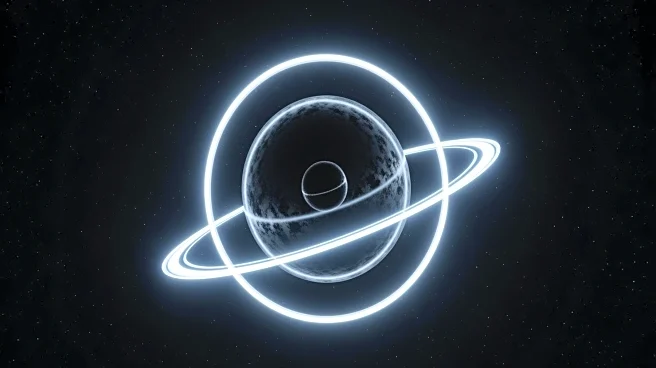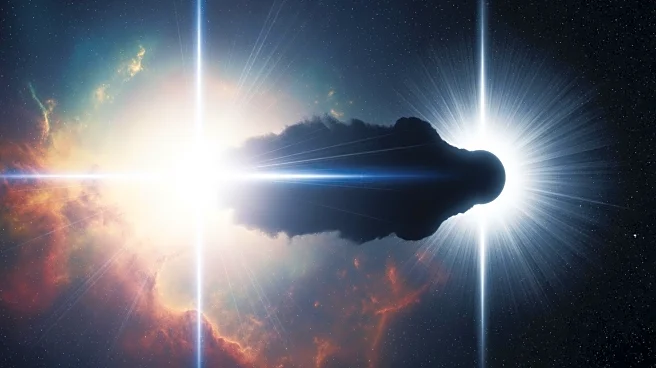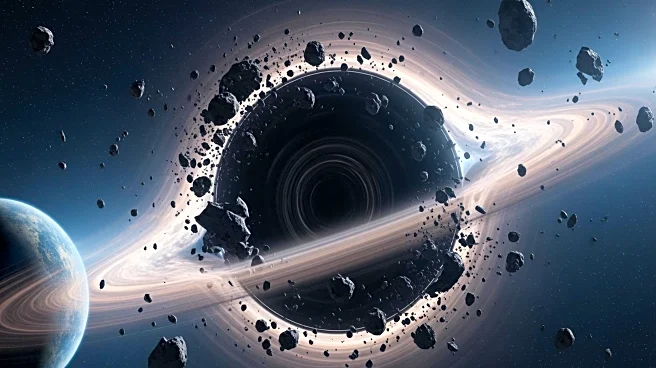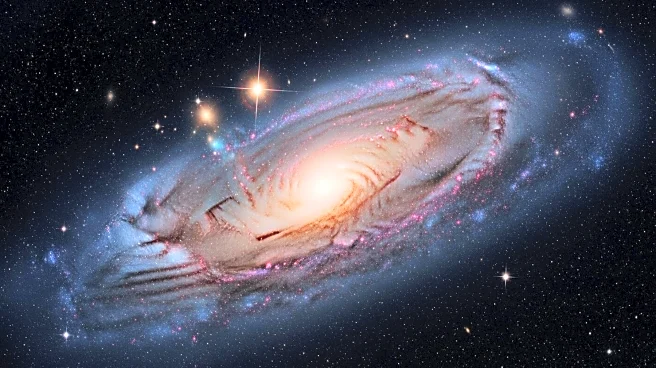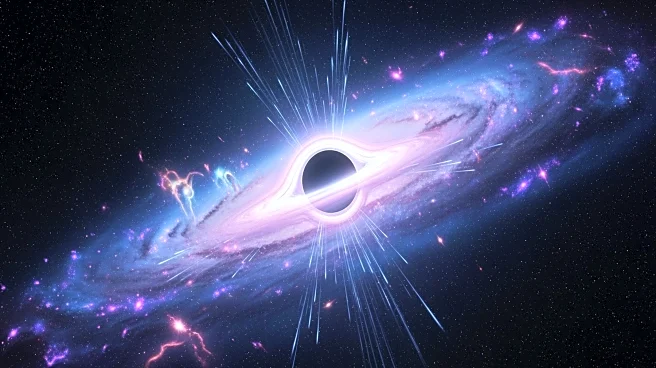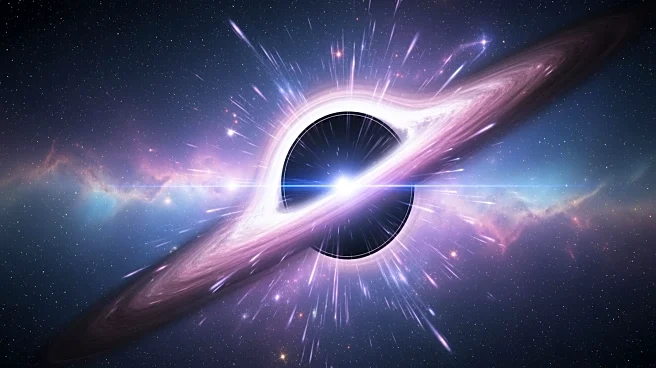What's Happening?
Scientists have observed a tidal disruption event (TDE) where a black hole ripped apart a star outside the central region of a galaxy, producing unprecedented radio emissions. This event, named AT 2024tvd,
was led by Dr. Itai Sfaradi and Prof. Raffaella Margutti, with contributions from international collaborators. The discovery was made using several radio telescopes, including the Very Large Array and ALMA. The black hole was located approximately 2,600 light-years from its host galaxy's center, challenging the assumption that supermassive black holes are confined to galactic centers.
Why It's Important?
This discovery alters the understanding of black hole behavior and their potential locations within galaxies. The intense and rapidly changing radio emissions suggest new mechanisms in how black holes release material, which could lead to revisions in current astrophysical models. The findings highlight the dynamic nature of black holes and their ability to exist and remain active in unexpected regions, potentially impacting theories on galaxy formation and evolution.
What's Next?
Further research will focus on understanding the mechanisms behind the delayed radio emissions and the implications for black hole activity. The scientific community will likely conduct additional observations to confirm these findings and explore similar events in other galaxies. This could lead to a broader understanding of black hole dynamics and their role in the universe.
Beyond the Headlines
The event underscores the importance of international collaboration in astrophysics and the role of advanced technology in making groundbreaking discoveries. It also highlights the potential for black holes to influence their surroundings in ways not previously considered, prompting a reevaluation of their impact on galactic environments.
